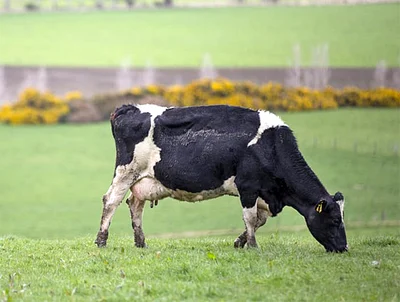Milk price hike is good news

Fonterra has given dairy farmers some good news with a 30c increase in its forecast average farmgate milk price.
This brings the milk price to 20c below the May 2023 average forecast.
On Monday the dairy co-operative lifted its forecast farmgate milk price to an effective midpoint payment of $7.80 per kilogram of milk solids (kgms).
Local dairy farmer Mark Cressey said the increase was "very good news" and would take "some pressure" off dairy farmers.
"We're seeing demand increasing from the Middle East and a little bit of demand coming back from China."
Cressey said operations would still be tight for some farmers because of inflation. While the price of fertiliser had come down, other costs - such as feed - had gone up and stayed up.
Three years ago $8 would have been a good payout. If it gets to $8 this year, it will be sustainable, he said.
In May last year Fonterra’s average forecast was $8.00/kgms. But the mid-point price was slashed to $6.75 in August due to a flagging global market. The cut put a squeeze on farmers and took the milk price below breakeven for many dairy farms.
In October, the price inched up by 50c and by another 25c in December to $7.50.
The forecast range for the season is now $7.30-$8.30/kgms thanks to stronger global demand.
Fonterra chief executive Miles Hurrell said global dairy trade prices had improved by 10% since Fonterra's price update in December.
However, the "potential impact of geopolitical instability and supply chain disruption" on demand from key importing regions remained uncertain, he said.
The news comes at much the same as a mixed bag of news for meat exports, with export volumes up but overall income down due to low global prices.
New Zealand’s red meat sector exported more meat products in 2023 than the year before but for a lower overall price.
Red meat exports totalled $10.2 billion in 2023 down 11% compared to the previous year, according to the Meat Industry Association (MIA).
MIA chief executive Sirma Karapeeva said the drop in price was due to tough economic conditions and inflationary pressures in many of New Zealand’s key markets.
“Consumers around the world still want to buy red meat but they are not paying as much for it.”
Increased supply from other exporters, including a significant increase in Australian sheep meat exports, also had an impact.
“Red meat exports are a good barometer of the state of the global economy,” he said.
Sheep meat export volumes increased by 3%, compared to the previous year, to 384,239 tonnes. However, the value was down 14% at $3.7 billion reflecting cost of living pressures in key markets but also increased competition from across the Tasman.
The volume of beef exports increased 7% to 511,680 tonnes but the value fell 9% to $4.4 billion, reflecting difficult economic conditions and high levels of exports from other global suppliers.
By Sharon Davis

